For over four years, Pure Earth has been working with a mining association in an alliance that was formed thanks to the working relationship between the association’s president Vilma C. and Pure Earth local coordinator France Cabanillas.
Today, the mining association is a model for responsible artisanal and small-scale gold mining (ASGM) in the Peruvian Amazon. This is due to the miners’ commitment to going mercury free, and restoring degraded areas of the rainforest damaged by mining.
This mining association represents a growing movement of miners who are dedicated to working responsibly and using environmentally sound best practices. They are the face of change in the Peruvian Amazon. Pure Earth is helping them innovate with the support of partners in the jewelry industry, who fund Pure Earth’s mercury-free trainings and reforestation work with the miners. This year, the association will become the first mining association to be certified to produce Fairmined Ecological Gold in the Peruvian Amazon under the Green Mining project funded by global jewelry brand Brilliant Earth, working with Pure Earth and the Alliance for Responsible Mining.
Now, in their own words, listen to what the miners and France are saying about the evolution of the association, the lasting change they are trying to bring about, the negative news reports about destructive mining, and their hopes and dreams for the future. The interviews have been shortened and translated. Read the full Spanish version here.

Q: Tell us about your mining association’s journey
Vilma C., President of the association: …I met (Mr. Cabanillas) at a few events on certification that were organized by, if I remember correctly, the Alliance for Responsible Mining, more than 10 years ago, when there weren’t formalized miners yet in Madre de Dios, and the legal situation of our association was still uncertain. Despite that, I told him that one of my dreams was to be able to produce “ecological gold” and obtain certification.
Even before meeting him, I had thought about how to add value to our gold. I remember that I wanted to form within the association a group of women dedicated to goldsmithing… however, the sociopolitical context of the region did not allow for this at the time.
“… one of my dreams was to be able to produce “ecological gold” and obtain certification.”
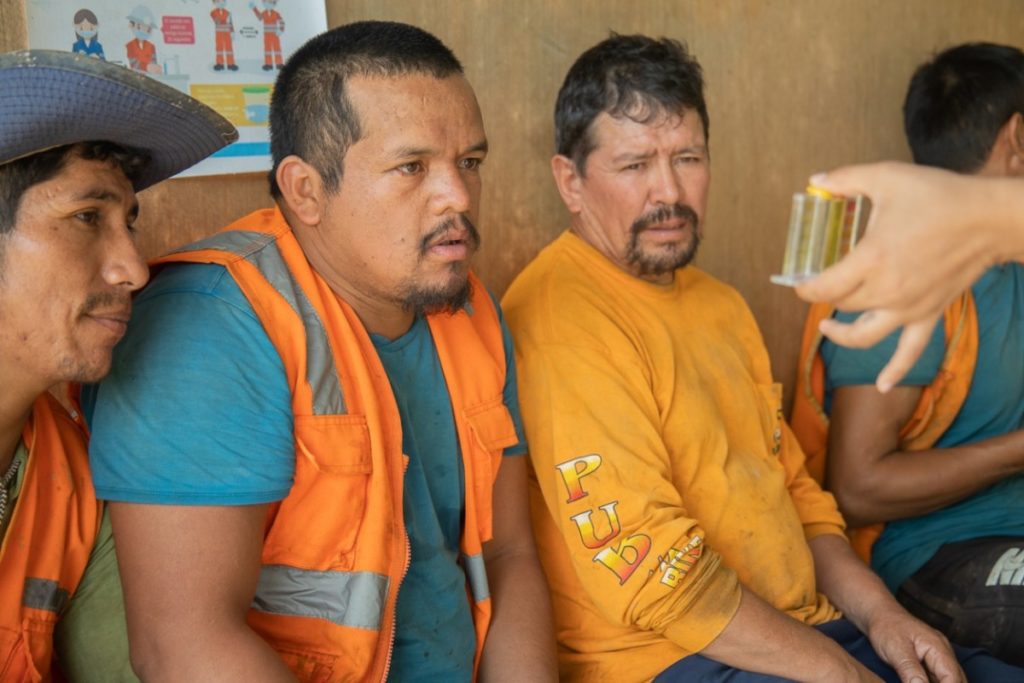
In 2010, the association, by being located in the buffer zone of the Tambopata Reserve, was considered part of the mining exclusion zone (outside of the mining corridor)… when Legislative Decree DL1100-2012 was introduced, which regulated the prohibition of illegal mining in Peru… only concessions within the mining corridor were allowed to work and sell their gold, and the concessions that were located in the mining exclusion zones (like the buffer zone of the Tambopata Reserve) could only work and sell their gold if and when they became formalized. Because of this, while the process of formalization was underway, our association had to suspend operations.
But all these problems gave us strength… Finally, in 2019, our association had its first five formalized concessions: Linda II, Fátima, Abel III, El Principe Azul 1, and El Pantaleón 1. Unfortunately, that same year we suffered a strong flood, which affected many of our campsites. Then, in 2020, the COVID-19 pandemic happened. We figured out how to recover from the adversities and currently, 11 concessions form part of our association, nine of which are formalized and soon the other two will be as well.
Now that we are formalized, we implement Internal Work Guidelines, which prioritize the prohibition of minors in the workforce, the consumption of alcohol, and the hunting of wildlife, as well as prioritize the classification of waste, among others.
France Cabanillas, Pure Earth: Currently, under the Green Mining project, implemented by Pure Earth and the Alliance for Responsible Mining and funded by the global jewelry company Brilliant Earth, the association has managed to produce gold without mercury on their own in a consistent way… They have also perfected their smelting techniques and have even created artisanal jewelry, with a mercury-free gold supply chain of high quality, which is very attractive for jewelers. The association is currently very efficient in their processing and smelting activities; this incentivizes other miners to opt for the change to clean techniques and reduce their use of mercury.
In January of 2023, for the restoration work within the Green Mining project, the first reforestation of three hectares in the mining concession Fátima will be conducted jointly with the miners of the association. It is impressive the growth that the association has had in such a short amount of time, being on track to becoming the first association to become Eco-Fairmined certified in the Amazon.
“It is impressive the growth that the mining association has had in such a short amount of time…”
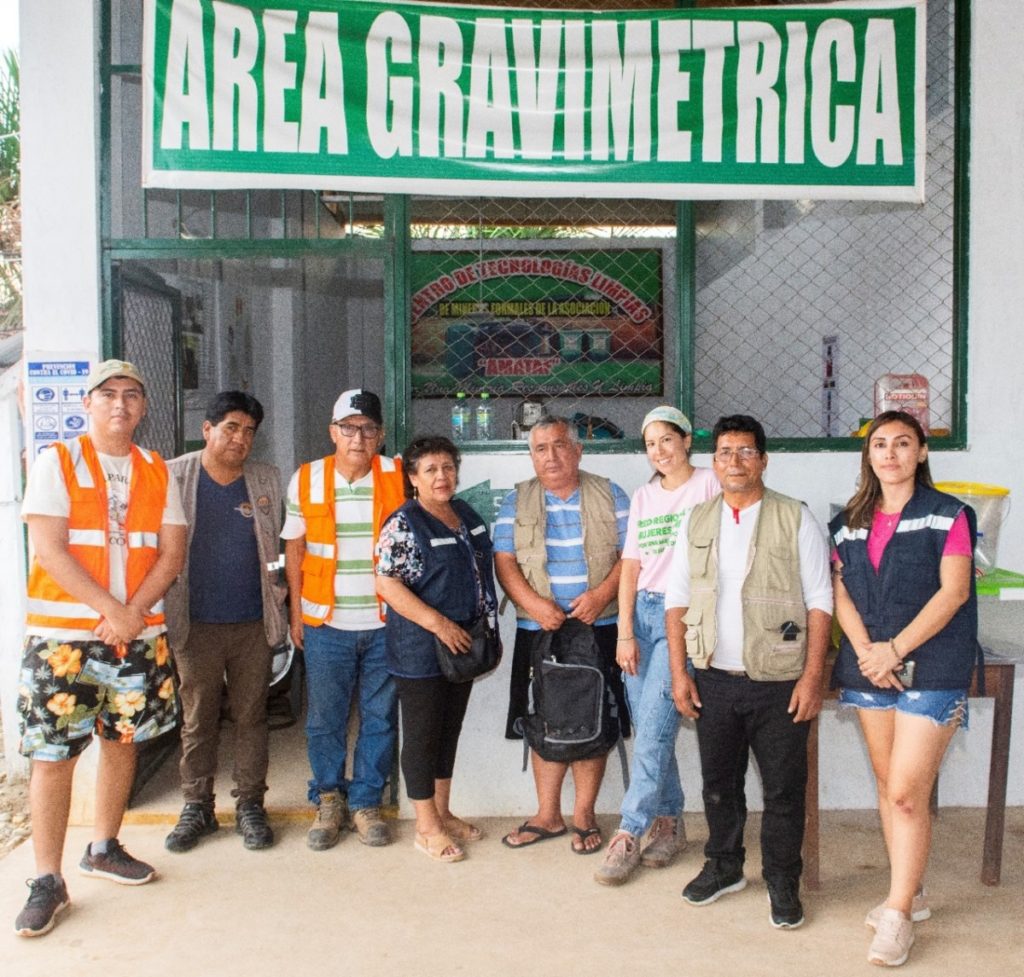
Q: Why did the co-op decide to go mercury free?
Vilma C.: Mainly we decided to stop using mercury because we understand the health risk of contamination and in addition because mercury is actually very expensive.
Hugo Q.: We had always wanted to improve, to innovate.
Faustino O.: At first, it was a radical change because it affected how we organized our work. Our workers were not very satisfied, but we decided to train ourselves, improve, and demonstrate that it is possible. We still have not managed to recover 100% of the gold from the concentrate, but we are sure that we will soon achieve this. The change was positive and serves as an example for other miners and has helped our co-op’s image.
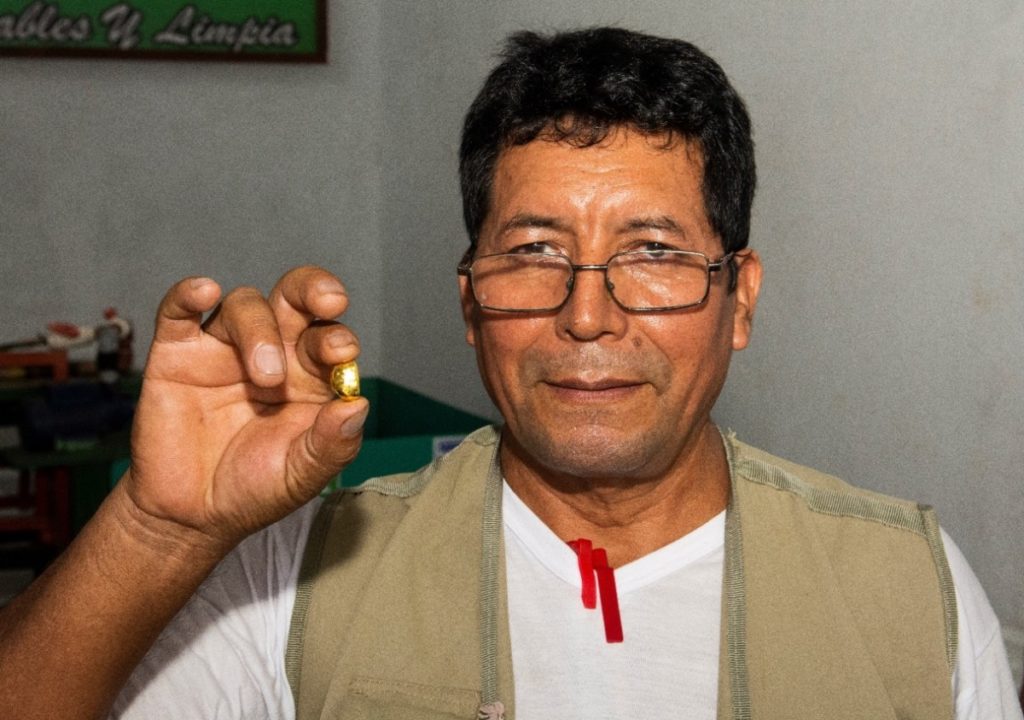
Q: What would you like people, especially jewelers and consumers, to know about the work you are doing?
Vilma C.: I would like them to know that we are actually working to extract gold without mercury responsibly and in accordance with the law. The workers are on payroll; they have health insurance; they receive workshops on various topics. I want them to know all the sacrifice that has been made…
Faustino O.: I would like the jewelry industry or the responsible consumers to know, first hand, the efforts that we are doing to create responsible mining through reducing the use of mercury, restoring degraded areas, and creating a change in this type of mining.
Hugo Q.: I would like them to visit us to see that we fulfill the standards, and to see the work that we do. I would like them to visit us because documents can say many things, but being in the field is the best way to understand how complicated the work is.
“I would like them to visit us to see that we fulfill the standards…”
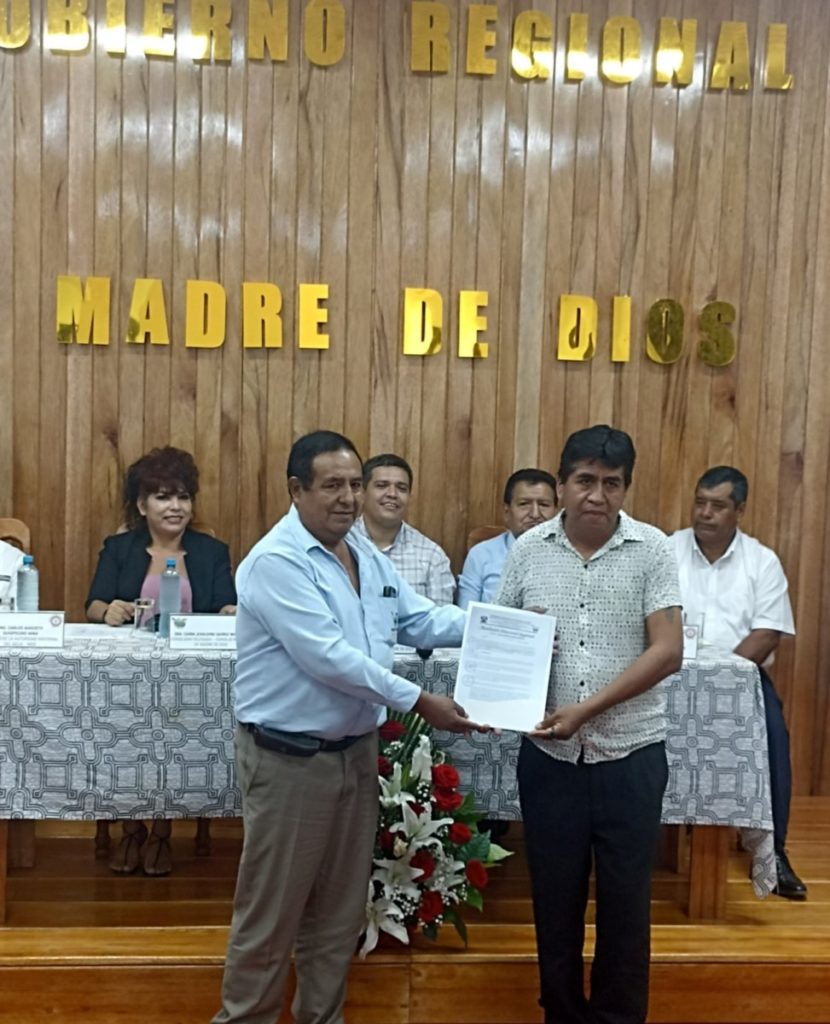
Q: What do you think about the news coverage of gold mining in Madre de Dios?
Hugo Q.: … they sell disaster. It would be nice if reporters cover the best practices that we are doing. Publicity should be given to the good works to incentivize more miners to do it.
Faustino O.: It’s a shame that they cover this part of mining and not the efforts to improve. Our mining association would like to talk to reporters directly, and invite them to see the reality of the association and the work that is being done.
Vilma C.: I think that they do not cover the information about best practices due to ignorance. Nowadays, there are starting to be more miners that want to do the right thing, not only in our association, but some miners prefer to maintain a low profile because of fear and safety concerns
“Publicity should be given to the good works to incentivize more miners to do it.”
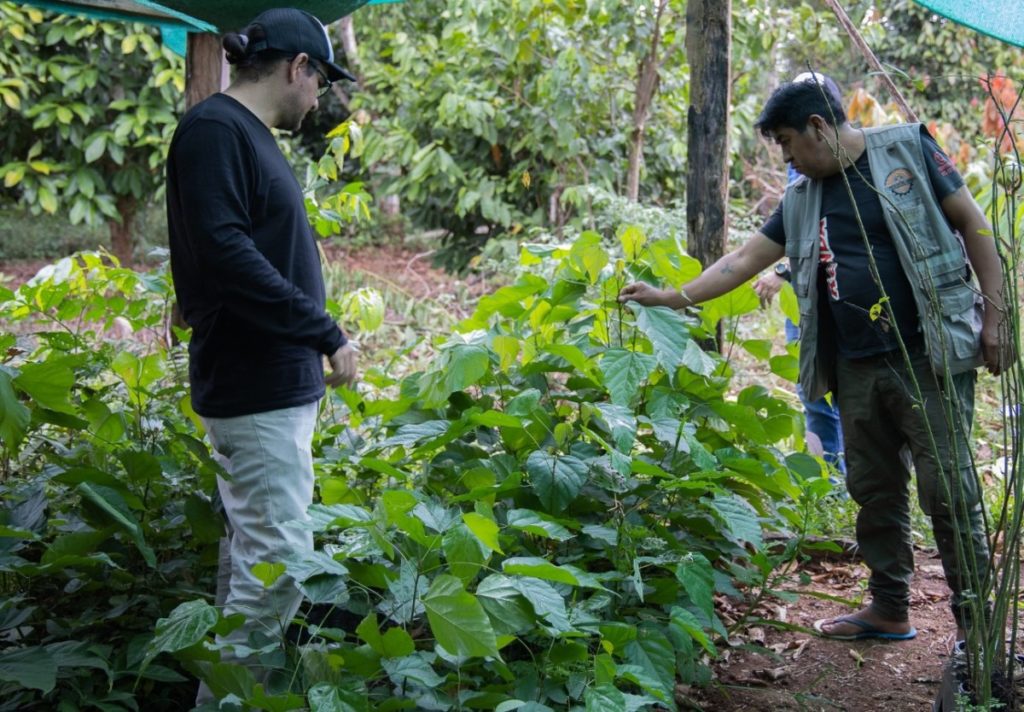
France Cabanillas: International and national media… often they conflate the entire mining community as illegal, without distinguishing between formalized miners or those who are in the process of formalization… we need to promote formal mining that works with all necessary permits and authorizations, and that above all allows for the consideration of the specificities of working in the Amazon.
What we have been able to accomplish with the co-op is to create an ASGM model for the Amazon that includes the elimination of mercury, the restoration of degraded areas as part of mine closure, and the generation of incentives through a responsible market, whether national or international. All of this while understanding that the practices and standards that the co-op follows are above and beyond the national regulations… replicating this type of model is what the ASGM sector needs in order to grow in an orderly manner and to favor the development of the population in Madre de Dios.
“What we have been able to accomplish with the mining co-op is to create an ASGM model for the Amazon.”
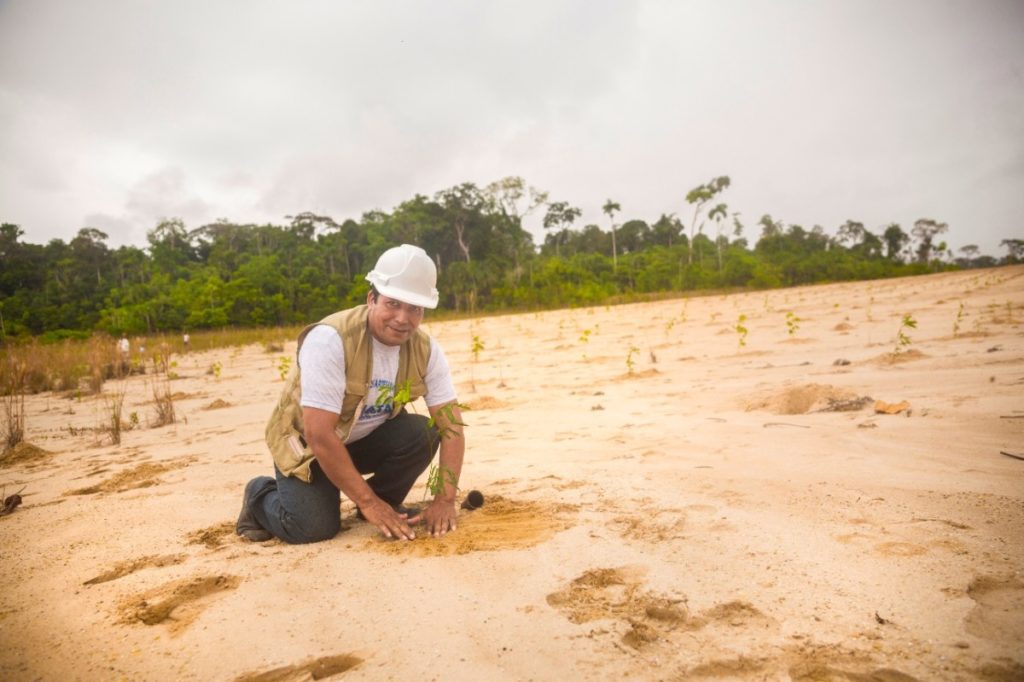
Q: What would you like to see for the future of the mining co-op and the families of the association?
Faustino O.: I would like us to restore more degraded areas and completely eliminate the use of mercury and thus change the image of ASGM, not only that of our co-op but of the entire region.
Hugo Q.: I think that we can form a business with some partners and thus be able to work to learn how to make jewelry. This could help us commercialize our jewelry directly to all of Peru and to foreign markets.
Vilma C.: I want our association to be able to directly export its ecological gold for a fair price, to give added value… I would like the younger generations that are interested in mining to study and be educated on administrative topics, on business management, so that they can head our association in the future, and those that are not interested in mining should also study and be educated in something that they like, so that they can appreciate the effort of their parents so that they could have better opportunities.
“I would like us to restore more degraded areas and completely eliminate the use of mercury and thus change the image of ASGM…”
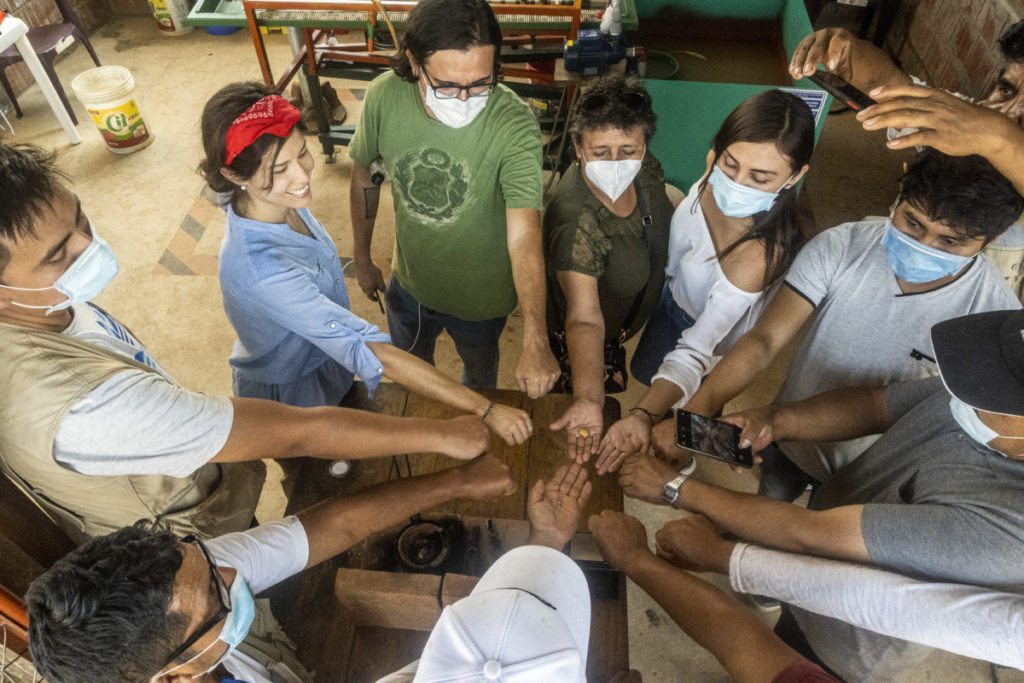
Q: Has ASGM Changed In The region?
France Cabanillas: I remember that in 2015 it was very difficult to work with the ASGM sector in Madre de Dios because there was a lot of mistrust by the miners, owing to the reputation that mining had been given… This type of opinion put mining that was formalized or in the process of formalization as a problem and not as part of the solution. In that time, Pure Earth was the only institution that worked directly with miners on topics like mercury elimination.
I understood that relationships and trust are fundamental to be able to create change and exchange knowledge. And so it was that little by little, we were able to accomplish the implementation of various projects with the direct participation of the miners, with the objective of improving the environmental practices of mining, and that this would translate into improving the quality of life for the miners and the nearby population in general.
“… relationships and trust are fundamental to be able to create change and exchange knowledge….”
Since then, Pure Earth has forged an objective work, based on trust in our local partners, the miners, and through the years, this has allowed for other institutions to be able to start projects with miners in Madre de Dios.
Currently, ASGM in Madre de Dios has received attention from various institutions, the Peruvian government, NGOs, la Cooperación, academia, and others that finally are recognizing that the miner is the most important agent of change to improve this sector that is so important for Madre de Dios.
I think that this mining association clearly reflects what can be accomplished when there is will and commitment and when work is done that understands the needs of the miners, and adapts work to improve techniques to this context as opposed to trying to adapt the miners to the technical improvements.
“… the miner is the most important agent of change…”




